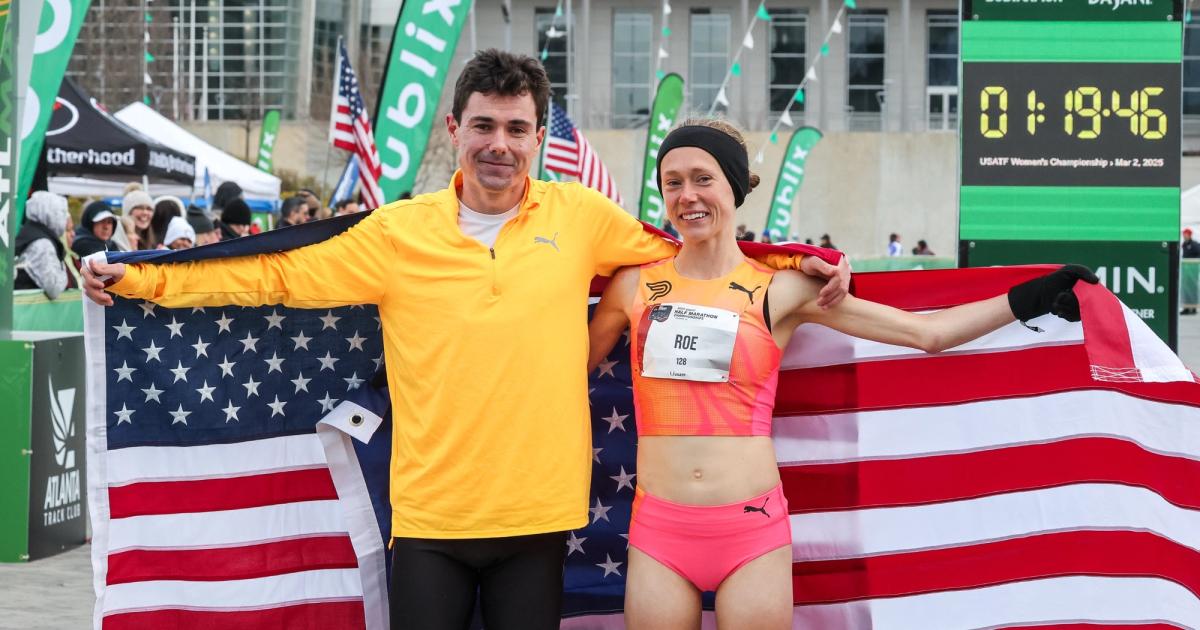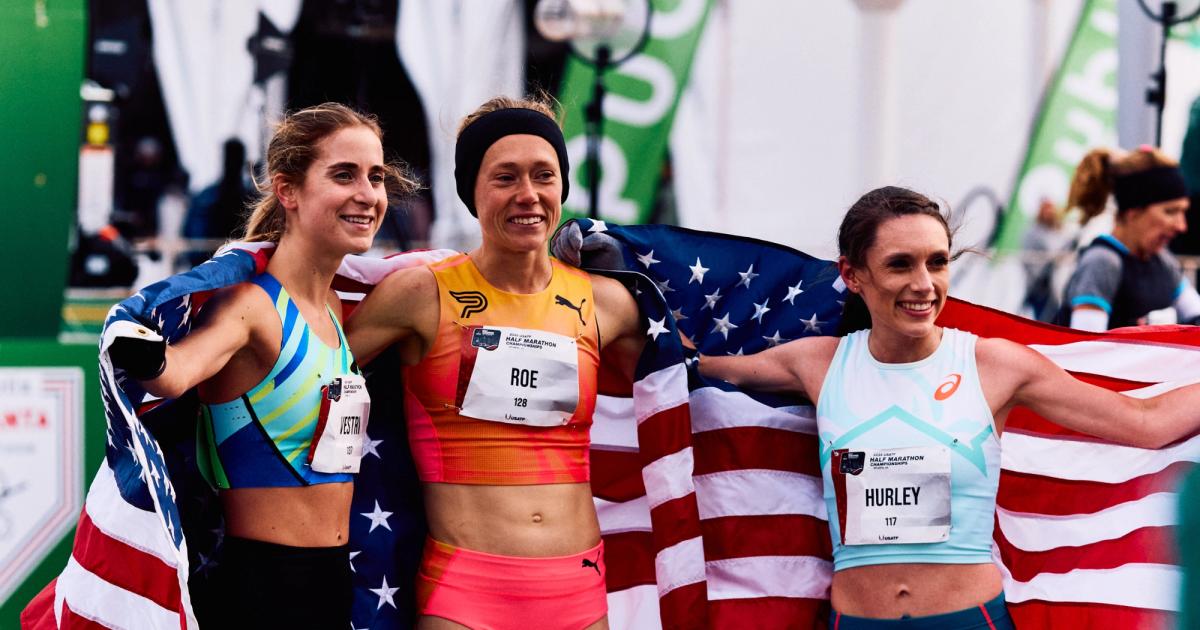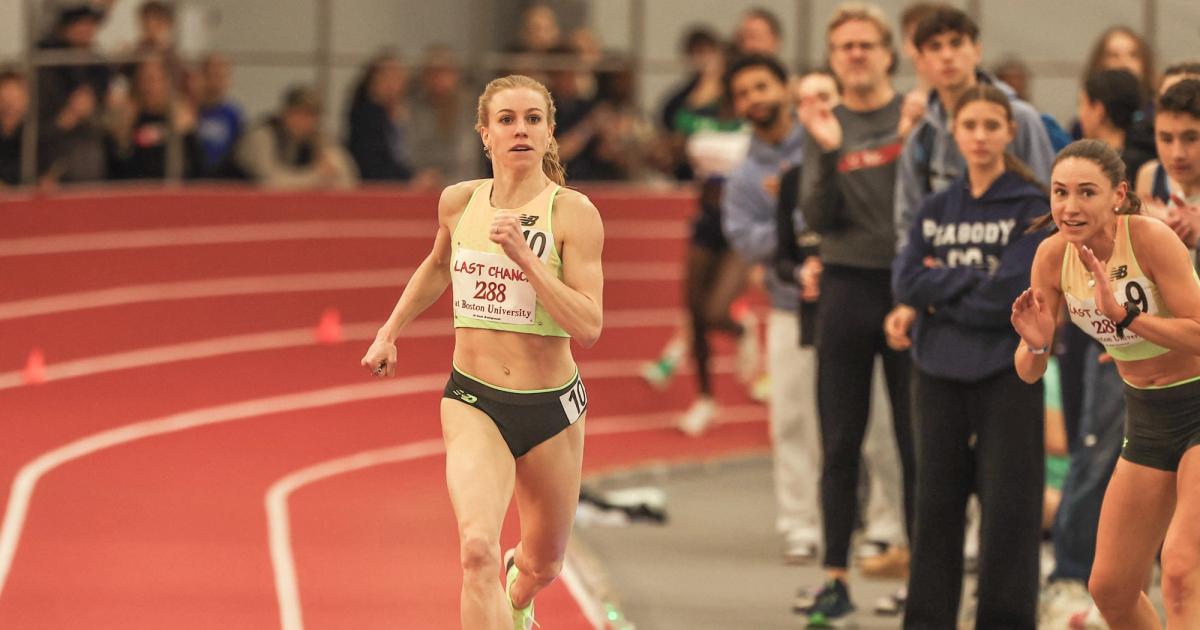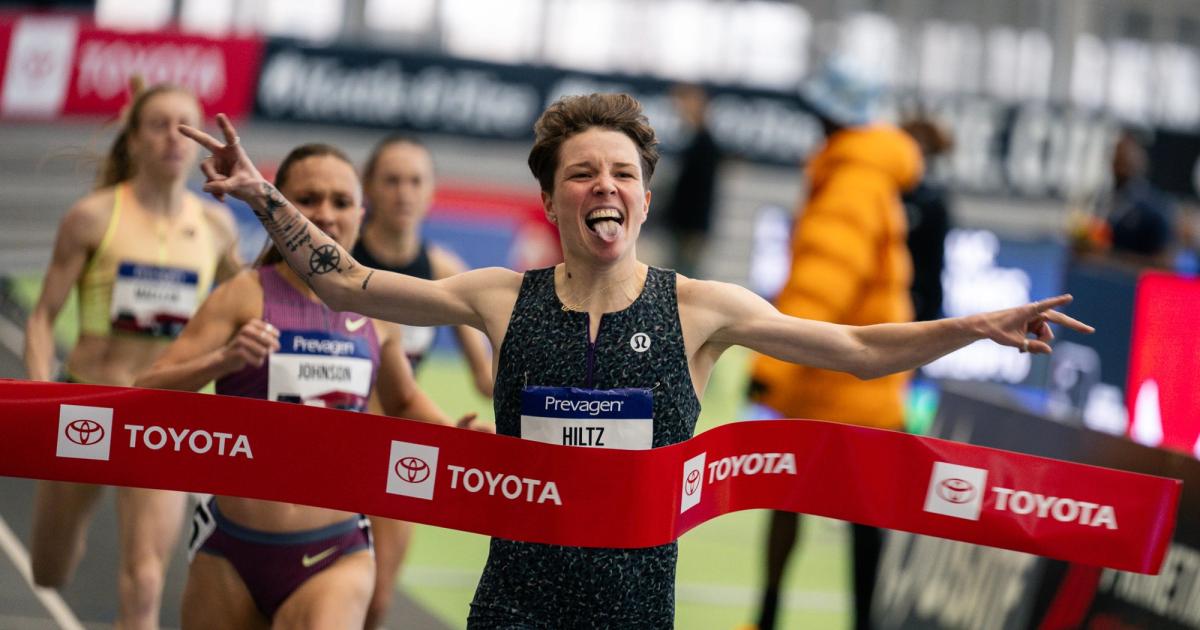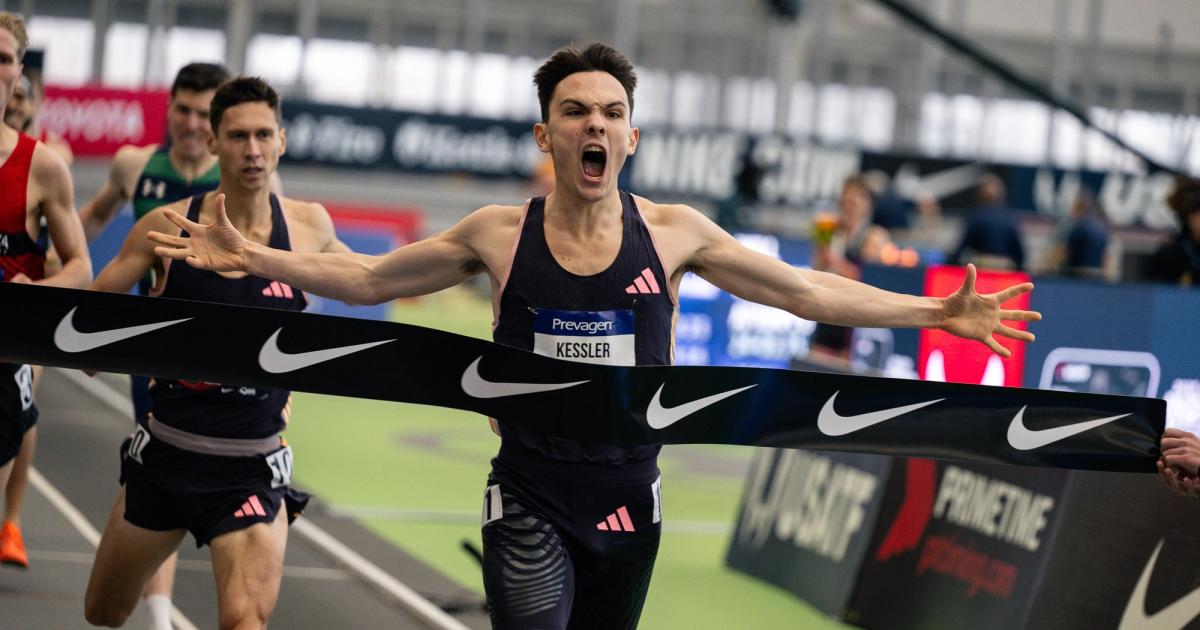By David Melly
March 5, 2025
Sometimes it feels like we’ve become so accustomed to the status quo that we don’t even dare to dream anymore.
Yes, that melodramatic sentiment is directed at the USATF road running circuit, historically a scattershot assortment of events defined as a group by random distances (6km, 20km, and 25km are all real options), watery fields, and hard-to-find broadcasts. And that became such a norm (and a meme) that we as a newsletter—and as a nation—forgot that better things are possible.
But then we woke up Sunday morning, a new day dawned teeming with almost religious significance. The Publix Atlanta Half Marathon, which served as the U.S. Half Marathon Championship this year, let us know this wasn’t just any stop on the road circuit, thanks in part to a revelatory new technology: YouTube.
That’s right: a high-quality, easy-to-find, free-to-stream broadcast of the entire race with no cuts to commercial and frequent split-screen of the men’s and women’s leaders. All offered up to the public. No need to download a new app, scour the USATF website, or sell your firstborn child.
And the races on screen offered three simple but important elements for any enjoyable sport-viewing experience: the stakes were high, the names were big, and the results were unpredictable.
As we gear up for the first-ever World Road Running Championships on U.S. soil (in San Diego in September), the Atlanta race served as a selection event with spots on the line for Team USA. It’s not necessarily possible or even desirable for every single national championship to act as a trials for a larger event. But the confluence of an American-hosted World championship and the expansion of the championship formally known as “World Half Marathon” to include a mile and a 5km helps make those three particular road championships an exciting little mini-series ahead of SD25.
This is a particularly notable development for the aspirants in the half, because if your best distance is 13.1 you probably end up a little stuck between the track and the full marathon more often than not, and inevitably have fewer tailor-made chances to make a U.S. team. Which is probably also why we got a better-than-average field toeing the line, including half marathon American record holder Weini Kelati, former American record holder Sara Hall, and Olympian Dakotah Popehn. The men’s side saw a clash of strength and speed between guys with recent track success like Joe Klecker and Ahmed Muhumed and guys with recent marathon success like Clayton Young and Futsum Zienasellassie. There were a few notable absences, but given competing priorities on the calendar like the winter track season, spring marathons, and a highly-touted World qualifying opportunity at The TEN, it was a good showing.
The final dab of secret sauce that made the Half Champs so exciting? None of those big names we just listed actually made the podium. The largest shock came in the women’s race, where Kelati, fresh off an American record in Houston only six weeks ago, made a decisive move just before halfway and held an eight-second lead at 10km but struggled mightily over the final miles and ended up seventh, nearly two minutes off the leaders. She may still get to toe the line in San Diego thanks to a complex world ranking-based wild-card system, but it was a bit of a surprise to see Kelati, one of the country’s most consistent road warriors, get handily beaten.
Instead, it was Taylor Roe, the 24-year-old Oklahoma State grad and Puma Distance Elite rookie who, alongside runner-up Emma Grace Hurley, reeled in Kelati over the next few hills and then broke free in the final 1.5 miles to claim her first national title in 67:22, an 86-second improvement over her debut only two months earlier in Houston. Roe wasn’t necessarily one of those collegiate athletes you’d assume would immediately jump to the roads, as she won her sole NCAA title over 3000m in 2022 and finished eighth in the 5000m final at Trials last year, but after her strong start to 2025, it feels highly possible she follows the Fiona O’Keeffe playbook to a quick marathon debut if this trajectory continues.
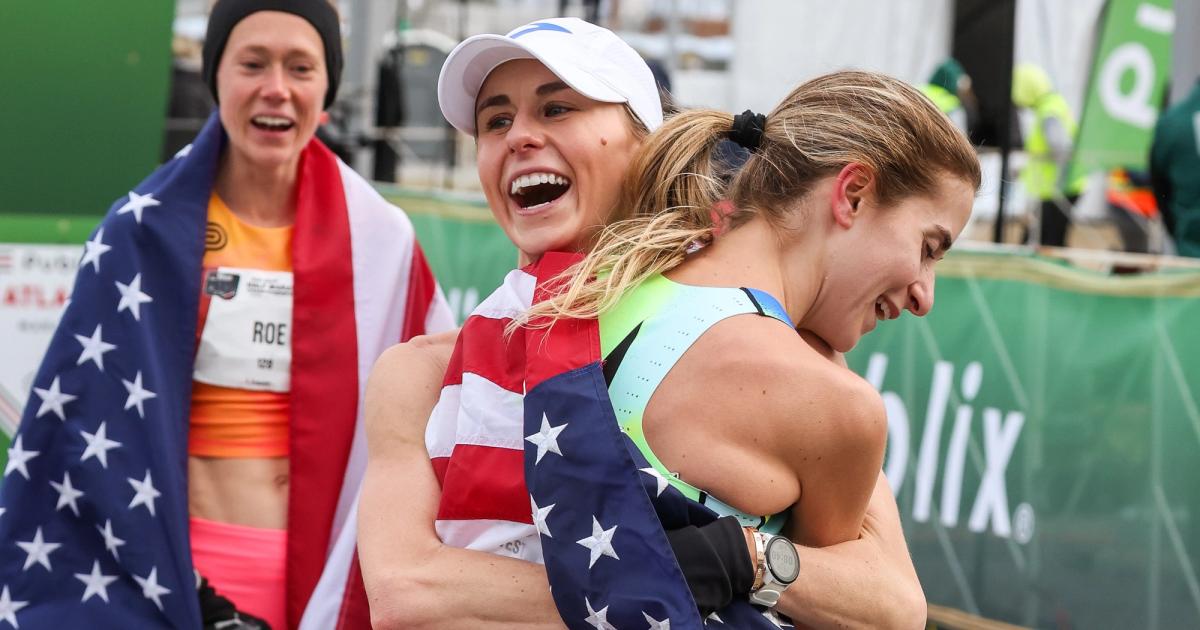
Amanda Vestri, Jess McClain | Kevin Morris / @kevmofoto
Hurley and third-placer Amanda Vestri are exactly the kind of athletes this sort of race is designed to reward: stalwarts on the domestic road racing scene who may never crack 30 minutes in the 10,000m or 2:19 in the marathon, but who have nevertheless demonstrated consistent road running chops, and deserve a chance to earn a Team USA kit. And you’ve gotta feel for Jess McClain, who won a U.S. road title over 10km last fall but has now finished fourth in three of her last five national championships, including two Olympic Trialses.
The men’s race was far more opaque from the start, with no clear favorite like Kelati to slap a target onto. Despite Hillary Bor leading at the 5km, 10km, and 15km checkpoints, the splits don’t tell the whole story. Klecker hovered near the front early, Nathan Martin split the pack in two around 4 miles, and Teshome Mekonen stuck to Bor’s big move around 7 miles. Bor eventually shook off Mekonen, but the cost of doing so meant that he had no response when Andrew Colley dragged the chase pack back into contact. But shortly after the pack reconstituted around 10 miles, it was Puma’s Alex Maier—also an OK State grad—who hit the front and never looked back, eventually running away from the field to a 60:48 victory.
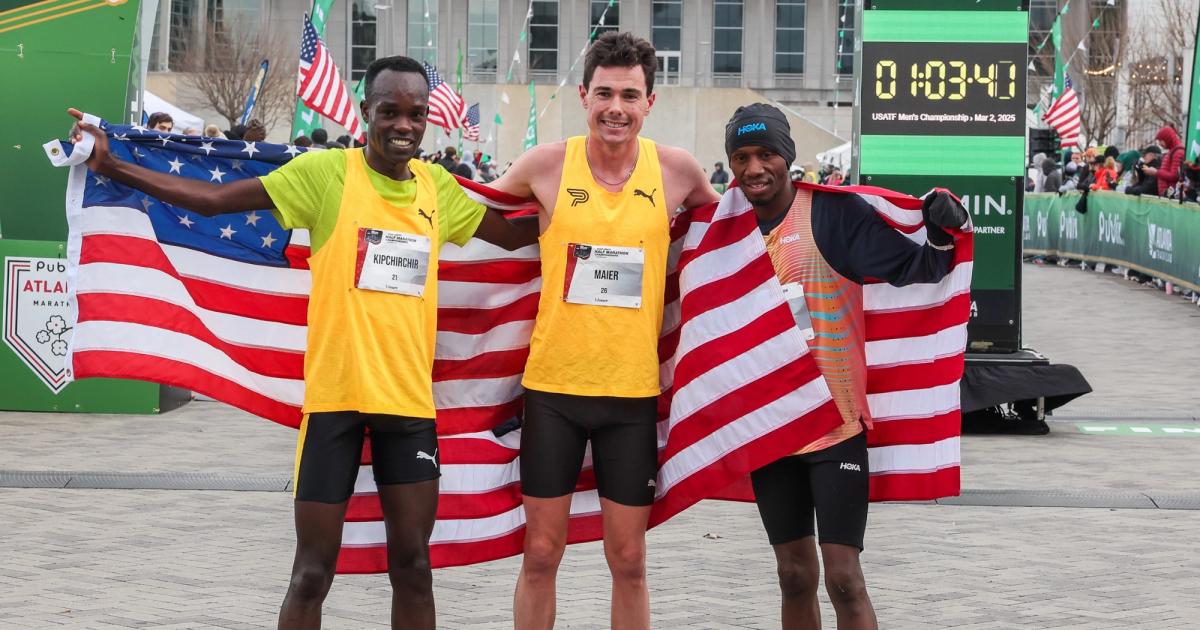
Shadrack Kipchirchir, Alex Maier, Hillary Bor | Kevin Morris / @kevmofoto
Bor’s early heroics weren’t for nothing, as he got a spot on Team USA, but 36-year-old Shadrack Kipchirchir beat him to second by a second, 60:58 to 60:59. If you only started following track and field in this decade, Kipchirchir’s performance may have come as somewhat of a surprise. He made his first U.S. team since 2019, and although his transition to the marathon has gone less than smoothly, real ones know that Shaddy is a game-day player, making four straight 10,000m teams from 2015 to 2019.
Commentators Carrie Tollefson and Tim Hutchings filled roughly 90 minutes of commercial-free airtime with accurate, knowledgeable, and generally entertaining commentary. It’s unfortunate that the standard we set for announcers these days involves checkmarks like “know the athletes’ names” and “have a basic knowledge of how racing works,” and even more unfortunate that half the broadcasts can’t clear that low bar, but Hutchings and Tollefson actually beat the grading curve by a good margin on this one. Plus, we got frequent use of split screen, helpful graphics indicating the course profile and runners’ progress, and an on-screen clock at all times.
Despite its decidedly not-primetime 7am start and a pair of winners who aren’t household names—yet!—the U.S. Half Champs felt like must-see TV for the first time in years. In an era where the average track fan has far more complaints than compliments for any given broadcast, it’s worth taking a moment to actually praise race organizers for successfully putting together a well-run and well-presented event.
It’s proof-positive that a little effort goes a long way, and should serve as a helpful guide for any other upcoming road races in 2025: this is how you do it right.
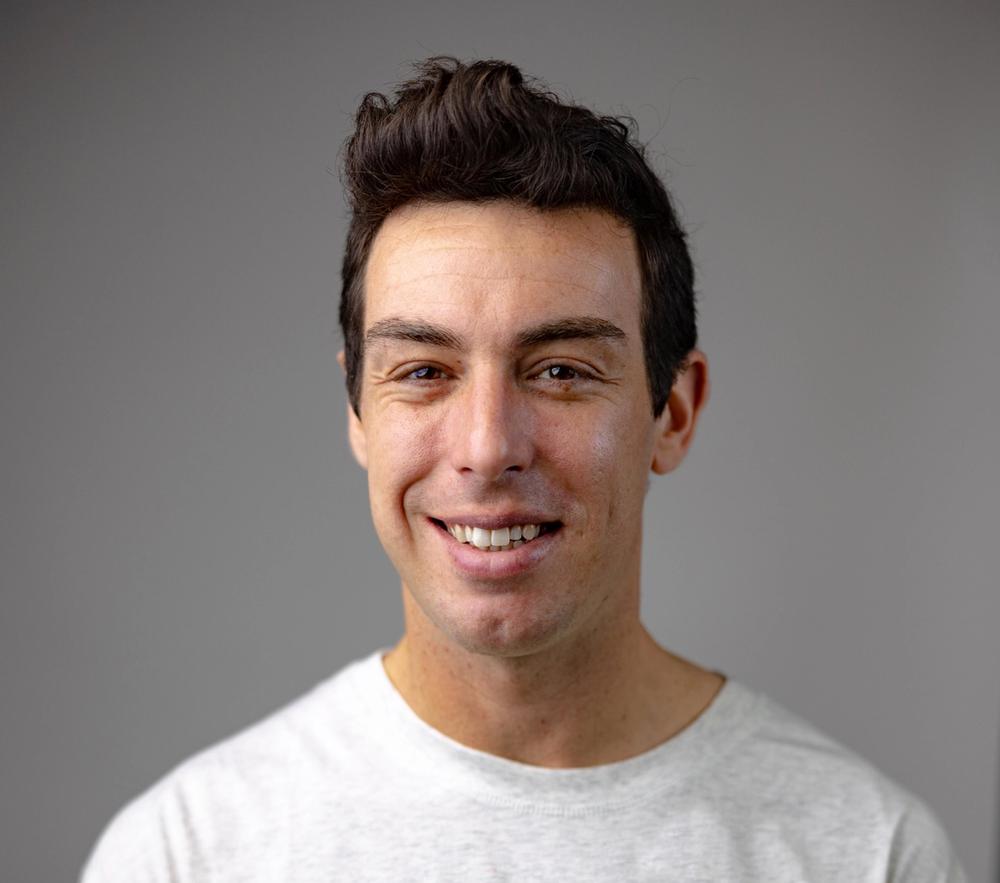
David Melly
David began contributing to CITIUS in 2018, and quickly cemented himself as an integral part of the team thanks to his quick wit, hot takes, undying love for the sport and willingness to get yelled at online.
